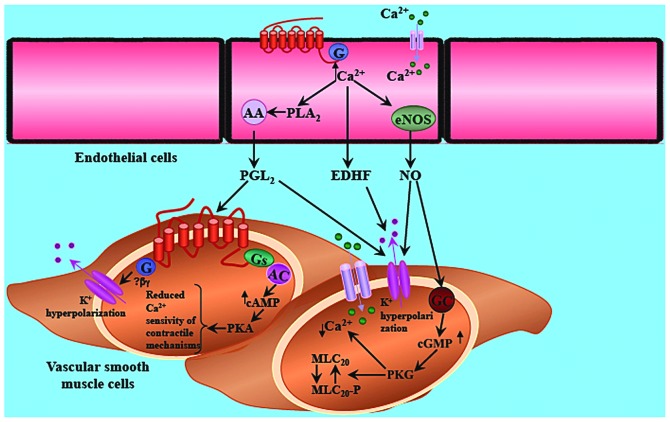Figure 2.
Regulation of vascular tone by NOS. The classical paradigm of vascular relaxation with NOS3-derived NO from endothelial cells diffusing into the adjacent vascular smooth muscle cells, where NO activates sGC. This increases the intracellular levels of cGMP, which in turns activates cGMP-dependent PKG. This kinase induces a series of phosphorylation that ultimately leads to a decrease in the degree in contraction via at least two mechanisms: Reduction of Ca2+ concentration and reduction in Ca2+ sensitivity. A reduction of Ca2+ concentration can be achieved by inhibiting Ca2+ influx through Ca2+-activated K+ channels. The cGMP pathway has been shown to activate this channel, which hyperpolarizes the layer of smooth muscle cells and indirectly inhibits the influx of Ca2+ through voltage-activated Ca2+ channels. In addition, the cGMP pathway also directly inhibits the voltage-activated Ca2+ channels. This inhibition can also be produced by direct S-nitrosylation of the channel. NOS, nitric oxide synthase; NO, nitric oxide; PLA2, phospholipase A2; MLC, myosin light chain; EDHF, endothelium derived hyperpolarizing factor; GC, guanylate cyclase; AC, adenylate cyclase; PKG, protein kinase G.

